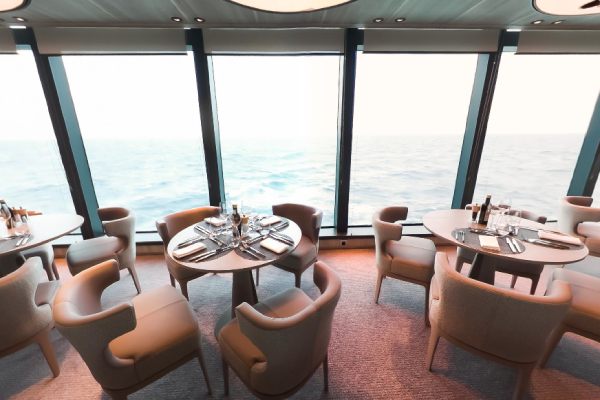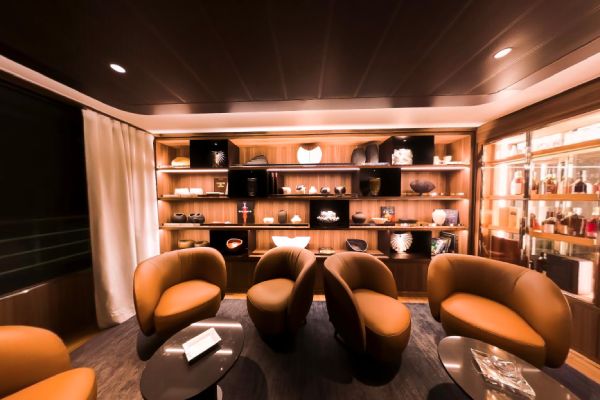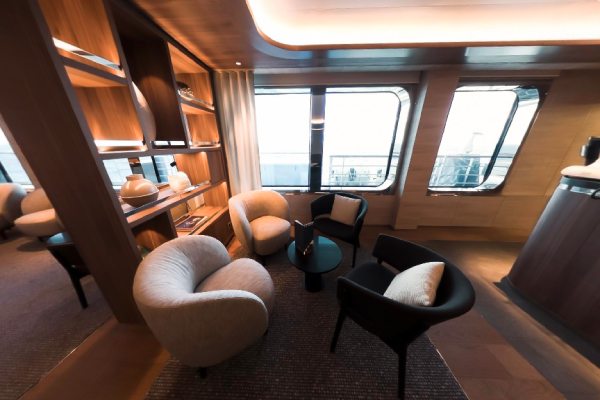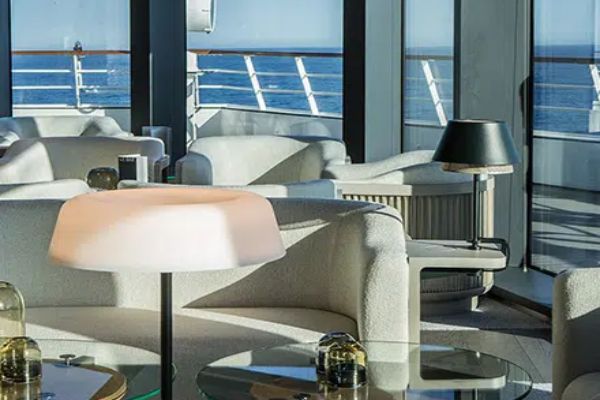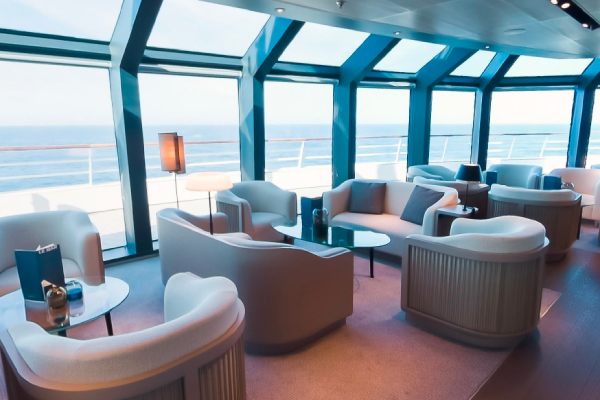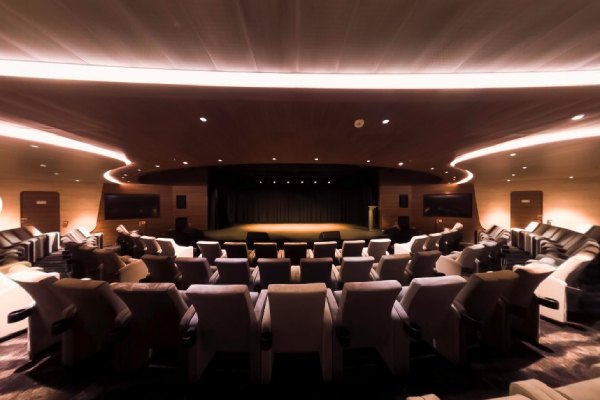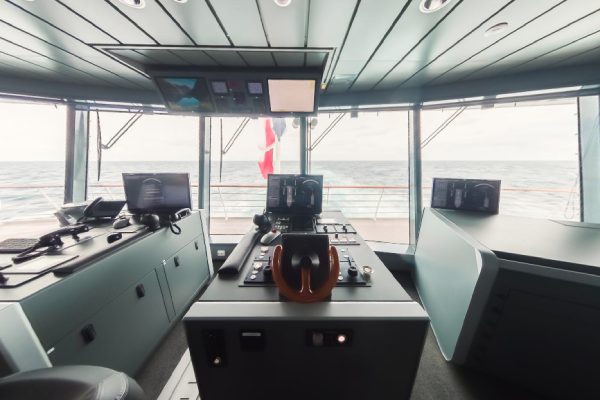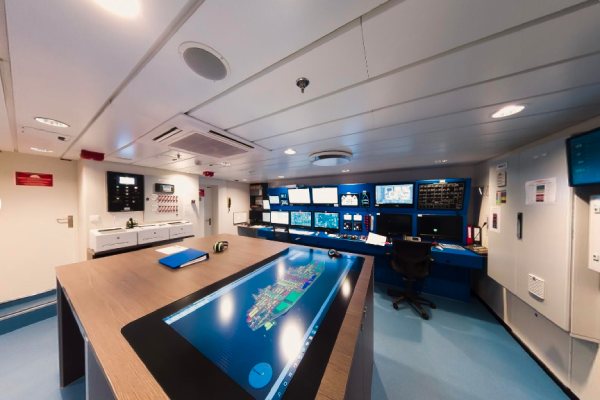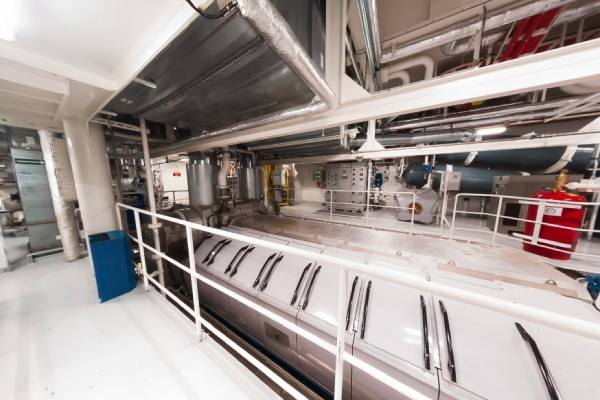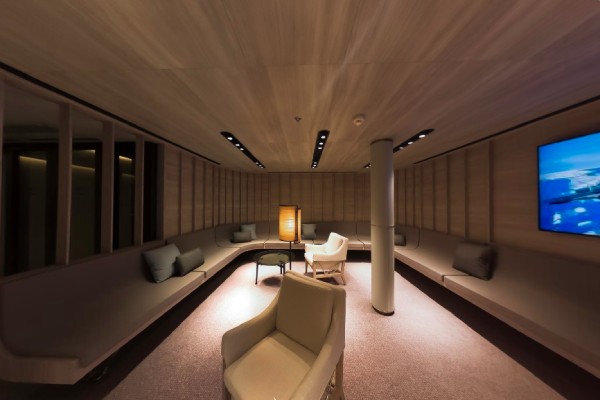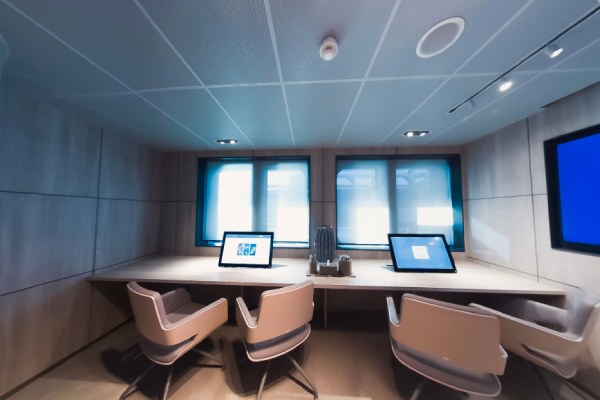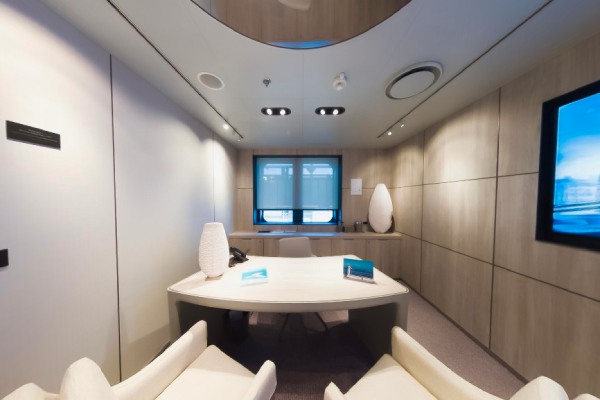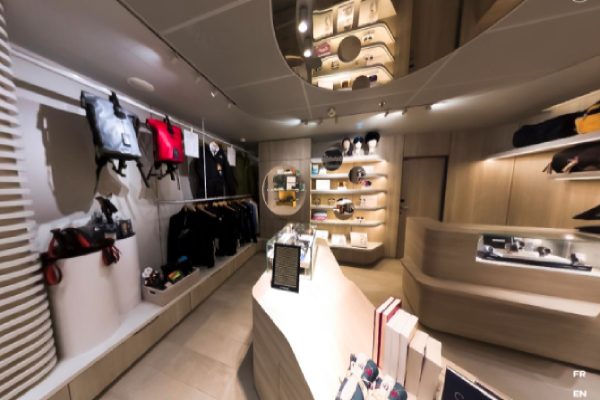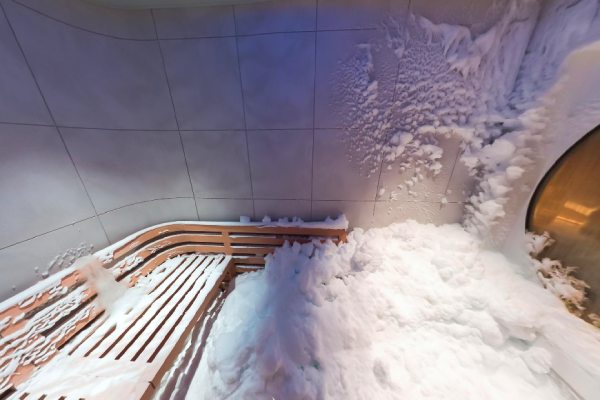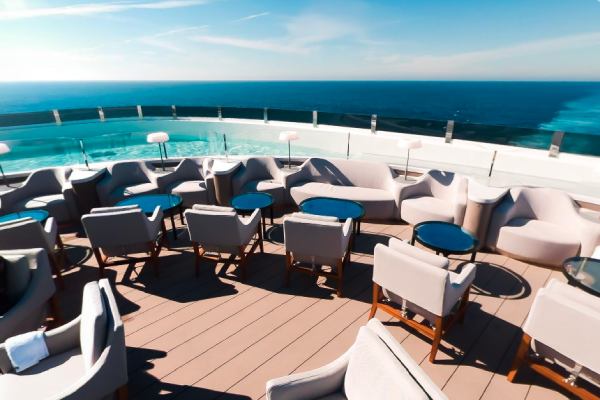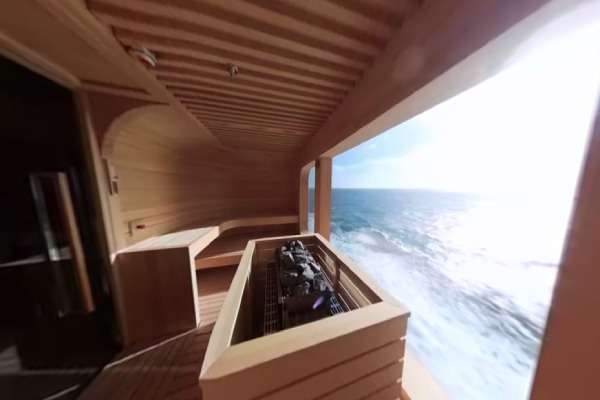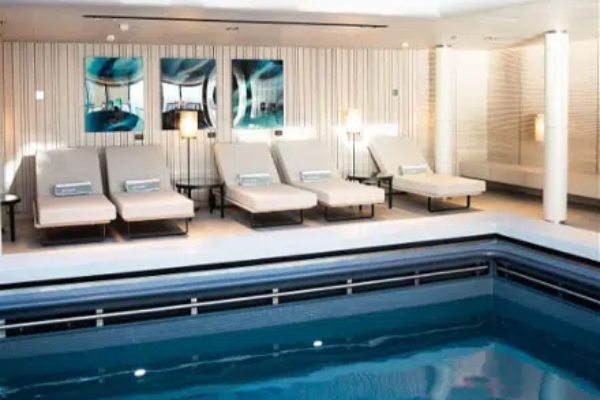Santiago
Optional Private Excursions
Avoid the crowds and hustle and bustle associated with a group activity. For a memorable trip ashore, we invite you to consider a private shore excursion. Enjoy the undivided attention of your own driver/guide and the flexibility of experiencing the aspects of the local culture that most interest you. Below are just some samples of the private shore excursions we can arrange for you. Let us personalize your experience!
-
Santiago - Private Half-Day Tour (4 Hours)
Discover the essence of Santiago as you explore its historic city center, lush parks, vibrant neighborhoods, and the city’s official founding site.
Your private tour begins with a convenient hotel pickup, taking you straight into the heart of Santiago’s historic district. Visit the iconic La Moneda Presidential Palace, where your guide will share insights into Chile’s founding and its modern political history. Stroll through the bustling city center, including the colorful Paseo Bandera, adorned with striking street sculptures nestled between government buildings and Chile’s financial hub. At the historic Plaza de Armas, learn about Santiago’s colonial roots, established in 1541 by Pedro de Valdivia, before driving along the scenic Parque Forestal, which lines the banks of the Mapocho River. Pass through the cultural enclaves of Barrio Bellas Artes and Lastarria, and admire the elegant stairways, fountains, and facades of Santa Lucía Hill.
Depending on your interests, you can explore Barrio Bellavista—home to lively restaurants and Pablo Neruda’s eccentric residence, La Chascona—or head uptown to experience the striking contrasts of this remarkable city.
This curated tour offers a perfect balance of history, culture, and scenic exploration.
-
Santiago - Culinary Contrasts: Markets & Bohemian Tour (5–6 Hours)
Immerse yourself in Santiago’s vibrant culinary scene as you explore the rich traditions of the market district and the trendy gourmet delights of hip Barrio Italia—a must for urban food lovers!
Your journey begins with a hotel pickup and a visit to Santiago’s historic center. Starting at the Plaza de Armas, we’ll make our way to the bustling Market District, home to La Vega Chica, La Vega Central, Tirso de Molina, and Mercado Central. Here, you’ll dive into Chile’s culinary traditions, experiencing the vibrant energy of markets that supply fresh goods to the entire city. Enjoy the colorful sights, enticing aromas, and lively atmosphere as you sample classic dishes like porotos (beans), savor a refreshing mote con huesillos—a beloved treat somewhere between a dessert and a drink—and try other traditional Chilean flavors. Wrap up the market visit with fresh seafood at Mercado Central, perfectly paired with a crisp Chilean white wine.
Next, we’ll drive through scenic Parque Forestal, pass the historic neighborhood of Lastarria, and admire Cerro Santa Lucía, the official founding site of Santiago. Our final destination is the bohemian Barrio Italia, a neighborhood known for its relaxed vibe, charming cafes, and boutique shops. Here, indulge in gourmet chocolate samples, stroll through the hidden arcades, and treat yourself to artisan ice cream, a favorite Chilean dessert.
This tour offers a perfect blend of tradition and modernity, giving you a taste of the contrasts that make Santiago such a dynamic and diverse city.
|
01/16/2026 |
01/17/2026 |
Ushuaia
Optional Private Excursions
Avoid the crowds and hustle and bustle associated with a group activity. For a memorable trip ashore, we invite you to consider a private shore excursion. Enjoy the undivided attention of your own driver/guide and the flexibility of experiencing the aspects of the local culture that most interest you. Below are just some samples of the private shore excursions we can arrange for you. Let us personalize your experience!
-
Ushuaia – Tierra del Fuego National Park and End of the World Train - Half Day
Meet your local guide at local pier and start with your visit.
Begin the tour by driving along National Route N3, crossing the valley of the Pipo River and the foothills of Mount Susana, to the train station located in the area where the inmates of the old prison collected firewood.
The little steam train will wind along the trail that the prison train used to follow over bridges, swampy areas, and green valleys, making a short stop at La Macarena waterfall. On completion of the train ride and already in the Tierra del Fuego National Park, drive through the most attractive landscapes of the park, such as Lake Roca and Bahía Lapataia (where the National Route N3, part of the Pan-American Highway ends).
In different locations take short walks to appreciate the different species of the native forest and the protected fauna in the southernmost National Park of Argentina.
After the tour you will be transferred back to the pier.
Tour highlights:
- Beagle Channel
- Lapataia Bay
- End of the World train
Inclusions
- Transfers to/from the pier
- English speaking guide
- Private vehicle
Exclusions
- Gratuities for guide and driver
- Box-Lunch
- Entrance fee
|
01/17/2026 |
01/17/2026 |
|
Cruise Starts (Embarkation)
|
01/17/2026 |
01/17/2026 |
Ushuaia
Ushuaia 01/17/2026
Capital of Argentina's Tierra del Fuego province, Ushuaia is considered the gateway to the White Continent and the South Pole. Nicknamed “El fin del mundo” by the Argentinian people, this city at the end of the world nestles in the shelter of mountains surrounded by fertile plains that the wildlife seem to have chosen as the ultimate sanctuary. With its exceptional site, where the Andes plunge straight into the sea, Ushuaia is one of the most fascinating places on earth, its very name evocative of journeys to the unlikely and the inaccessible…
Optional Private Excursions
Avoid the crowds and hustle and bustle associated with a group activity. For a memorable trip ashore, we invite you to consider a private shore excursion. Enjoy the undivided attention of your own driver/guide and the flexibility of experiencing the aspects of the local culture that most interest you. Below are just some samples of the private shore excursions we can arrange for you. Let us personalize your experience!
-
Ushuaia – Tierra del Fuego National Park and End of the World Train - Half Day
Meet your local guide at local pier and start with your visit.
Begin the tour by driving along National Route N3, crossing the valley of the Pipo River and the foothills of Mount Susana, to the train station located in the area where the inmates of the old prison collected firewood.
The little steam train will wind along the trail that the prison train used to follow over bridges, swampy areas, and green valleys, making a short stop at La Macarena waterfall. On completion of the train ride and already in the Tierra del Fuego National Park, drive through the most attractive landscapes of the park, such as Lake Roca and Bahía Lapataia (where the National Route N3, part of the Pan-American Highway ends).
In different locations take short walks to appreciate the different species of the native forest and the protected fauna in the southernmost National Park of Argentina.
After the tour you will be transferred back to the pier.
Tour highlights:
- Beagle Channel
- Lapataia Bay
- End of the World train
Inclusions
- Transfers to/from the pier
- English speaking guide
- Private vehicle
Exclusions
- Gratuities for guide and driver
- Box-Lunch
- Entrance fee
|
01/17/2026 |
01/17/2026 |
Drake Passage
Drake Passage 01/18/2026
Use your days spent in the Drake Passage to familiarise yourself with your ship and deepen your knowledge of the Antarctic. The Expedition Leader will first present the IAATO rules of conduct that must be observed during landings in the region and will explain everything you need to know about the zodiac outings. Lectures about the history and wildlife of the Antarctic will be an opportunity for you to learn more about this magical region, where every cruise is a unique experience. You will experience exceptional sailing moments on board and join the naturalist-guides on your ship’s exterior decks to look out for albatrosses, cape petrels, and other seabirds flying over the Drake Passage.
|
01/18/2026 |
01/18/2026 |
Drake Passage
Drake Passage 01/19/2026
Use your days spent in the Drake Passage to familiarise yourself with your ship and deepen your knowledge of the Antarctic. The Expedition Leader will first present the IAATO rules of conduct that must be observed during landings in the region and will explain everything you need to know about the zodiac outings. Lectures about the history and wildlife of the Antarctic will be an opportunity for you to learn more about this magical region, where every cruise is a unique experience. You will experience exceptional sailing moments on board and join the naturalist-guides on your ship’s exterior decks to look out for albatrosses, cape petrels, and other seabirds flying over the Drake Passage.
|
01/19/2026 |
01/19/2026 |
Antarctic Circle Crossing
Antarctic Circle Crossing 01/20/2026
Weather permitting, we'll cross the mythic line of the Antarctic Polar Circle, located along 66°33’ south of the Equator. This iconic area demarcates the point from which it is possible to view the midnight sun during the December solstice. Within this circle, the sun remains above the horizon for 24 consecutive hours at least once a year. Crossing this line, an experience known to few people, is sure to be an unforgettable highlight of your cruise through the polar regions.
|
01/20/2026 |
01/20/2026 |
Charcot Island
Charcot Island 01/21/2026
When he discovered this island surrounded by sea ice in 1910 from aboard the Pourquoi Pas ? as he mapped Alexander Island, Jean-Baptiste Charcot had not be able to get less than 40 miles away from it. Situated in a zone that experiences frequent low-pressure systems and regular cloud cover, the island remains in many ways an enigma. It is entirely covered in ice and sheer cliffs, with the exception of the rocky outcrops extending over a dozen kilometres in the far north-west. The ice in the narrowest part of Wilkins Sound has been cracking in recent times, thus officially detaching this island from its neighbour, Alexander Island, lying 50 km away. Very few people have landed on this largely untouched island, whose waters attract numerous seabirds, such as petrels, Antarctic terns and skuas.
|
01/21/2026 |
01/21/2026 |
Bellingshausen Sea
Bellingshausen Sea 01/22/2026
Stretching from the west of the Antarctic Peninsula to the Amundsen Sea, the Bellingshausen Sea was named after the Russian admiral and explorer who has been attributed the first confirmed sighting of mainland Antarctica, in 1820. Among others, its waters surround two of the Antarctic’s largest islands: Alexander Island and Thurston Island. You will explore this sea amid ice floe, blocks of sea ice and majestic icebergs. The coastal areas along the Bellingshausen Sea are also renowned as the home of colonies of emperor penguins. Depending on the month of the southern summer, you will perhaps be lucky enough to observe isolated adults, adolescents seeking emancipation or recently independent new adults.
|
01/22/2026 |
01/22/2026 |
Bellingshausen Sea
Bellingshausen Sea 01/23/2026
Stretching from the west of the Antarctic Peninsula to the Amundsen Sea, the Bellingshausen Sea was named after the Russian admiral and explorer who has been attributed the first confirmed sighting of mainland Antarctica, in 1820. Among others, its waters surround two of the Antarctic’s largest islands: Alexander Island and Thurston Island. You will explore this sea amid ice floe, blocks of sea ice and majestic icebergs. The coastal areas along the Bellingshausen Sea are also renowned as the home of colonies of emperor penguins. Depending on the month of the southern summer, you will perhaps be lucky enough to observe isolated adults, adolescents seeking emancipation or recently independent new adults.
|
01/23/2026 |
01/23/2026 |
Bellingshausen Sea
Bellingshausen Sea 01/24/2026
Stretching from the west of the Antarctic Peninsula to the Amundsen Sea, the Bellingshausen Sea was named after the Russian admiral and explorer who has been attributed the first confirmed sighting of mainland Antarctica, in 1820. Among others, its waters surround two of the Antarctic’s largest islands: Alexander Island and Thurston Island. You will explore this sea amid ice floe, blocks of sea ice and majestic icebergs. The coastal areas along the Bellingshausen Sea are also renowned as the home of colonies of emperor penguins. Depending on the month of the southern summer, you will perhaps be lucky enough to observe isolated adults, adolescents seeking emancipation or recently independent new adults.
|
01/24/2026 |
01/24/2026 |
Amundsen Sea
Amundsen Sea 01/25/2026
The great Norwegian explorer Roald Amundsen – famous as one of the first five men to reach the geographic South Pole – gave his name to this southern sea in 1929, following an expedition in its waters. Almost entirely frozen by a thick ice floe, Amundsen Sea stretches along Marie Byrd Land in Antarctica, between Bellingshausen Sea to the west and the Ross Sea to the east. The monumental icebergs are all that break the monotony of the infinite ice floe here: let yourself be immersed in a feeling of tranquillity before this vastness. These privileged moments sailing in the Amundsen Sea are opportunities to make the most of the original equipment and spaces on Le Commandant Charcot. Find yourself in this refined cocoon. Nourish yourself with the knowledge of the scientists and expert naturalists, who provide unique support during your polar cruise. Or simply contemplate the fascinating and captivating decor from the ship’s exterior decks.
|
01/25/2026 |
01/25/2026 |
Marie Byrd Land
Marie Byrd Land 01/26/2026
Marie Byrd Land is one of the most remote territories of our planet’s most inaccessible continent. It is a real privilege to just be able to contemplate its shores! Between the Ross Sea and its large shelf to the east and Bellingshausen Sea to the west, the frozen coastlines of these lands are bordered by the Amundsen Sea, partially covered by a thick ice floe. Stretching over more than a million km2 (over 620,000 square miles) in Western Antarctica, its ground is also isolated from the rest of the continent by the Transantarctic Mountains. It is certainly this geographic remoteness and its harsh climate that have made it one of our planet’s rare Terra nullius, a territory claimed by no State. In 1929, Marie Byrd Land got its name from Admiral Richard E. Byrd, in honour of his wife, following his expedition to the region. The exploration of its ice-sculpted landscapes will plunge you into the infinite Antarctic desert, where penguins, seals, whales and orcas are the only living souls. Depending on the time and weather conditions, your exploration of the region will take you towards a string of islands which, although little-known, remain fascinating: Siple Island and its eponymous mount, resulting from an old volcano and Clark Island.
|
01/26/2026 |
01/26/2026 |
Marie Byrd Land
Marie Byrd Land 01/27/2026
Marie Byrd Land is one of the most remote territories of our planet’s most inaccessible continent. It is a real privilege to just be able to contemplate its shores! Between the Ross Sea and its large shelf to the east and Bellingshausen Sea to the west, the frozen coastlines of these lands are bordered by the Amundsen Sea, partially covered by a thick ice floe. Stretching over more than a million km2 (over 620,000 square miles) in Western Antarctica, its ground is also isolated from the rest of the continent by the Transantarctic Mountains. It is certainly this geographic remoteness and its harsh climate that have made it one of our planet’s rare Terra nullius, a territory claimed by no State. In 1929, Marie Byrd Land got its name from Admiral Richard E. Byrd, in honour of his wife, following his expedition to the region. The exploration of its ice-sculpted landscapes will plunge you into the infinite Antarctic desert, where penguins, seals, whales and orcas are the only living souls. Depending on the time and weather conditions, your exploration of the region will take you towards a string of islands which, although little-known, remain fascinating: Siple Island and its eponymous mount, resulting from an old volcano and Clark Island.
|
01/27/2026 |
01/27/2026 |
Marie Byrd Land
Marie Byrd Land 01/28/2026
Marie Byrd Land is one of the most remote territories of our planet’s most inaccessible continent. It is a real privilege to just be able to contemplate its shores! Between the Ross Sea and its large shelf to the east and Bellingshausen Sea to the west, the frozen coastlines of these lands are bordered by the Amundsen Sea, partially covered by a thick ice floe. Stretching over more than a million km2 (over 620,000 square miles) in Western Antarctica, its ground is also isolated from the rest of the continent by the Transantarctic Mountains. It is certainly this geographic remoteness and its harsh climate that have made it one of our planet’s rare Terra nullius, a territory claimed by no State. In 1929, Marie Byrd Land got its name from Admiral Richard E. Byrd, in honour of his wife, following his expedition to the region. The exploration of its ice-sculpted landscapes will plunge you into the infinite Antarctic desert, where penguins, seals, whales and orcas are the only living souls. Depending on the time and weather conditions, your exploration of the region will take you towards a string of islands which, although little-known, remain fascinating: Siple Island and its eponymous mount, resulting from an old volcano and Clark Island.
|
01/28/2026 |
01/28/2026 |
Marie Byrd Land
Marie Byrd Land 01/29/2026
Marie Byrd Land is one of the most remote territories of our planet’s most inaccessible continent. It is a real privilege to just be able to contemplate its shores! Between the Ross Sea and its large shelf to the east and Bellingshausen Sea to the west, the frozen coastlines of these lands are bordered by the Amundsen Sea, partially covered by a thick ice floe. Stretching over more than a million km2 (over 620,000 square miles) in Western Antarctica, its ground is also isolated from the rest of the continent by the Transantarctic Mountains. It is certainly this geographic remoteness and its harsh climate that have made it one of our planet’s rare Terra nullius, a territory claimed by no State. In 1929, Marie Byrd Land got its name from Admiral Richard E. Byrd, in honour of his wife, following his expedition to the region. The exploration of its ice-sculpted landscapes will plunge you into the infinite Antarctic desert, where penguins, seals, whales and orcas are the only living souls. Depending on the time and weather conditions, your exploration of the region will take you towards a string of islands which, although little-known, remain fascinating: Siple Island and its eponymous mount, resulting from an old volcano and Clark Island.
|
01/29/2026 |
01/29/2026 |
Marie Byrd Land
Marie Byrd Land 01/30/2026
Marie Byrd Land is one of the most remote territories of our planet’s most inaccessible continent. It is a real privilege to just be able to contemplate its shores! Between the Ross Sea and its large shelf to the east and Bellingshausen Sea to the west, the frozen coastlines of these lands are bordered by the Amundsen Sea, partially covered by a thick ice floe. Stretching over more than a million km2 (over 620,000 square miles) in Western Antarctica, its ground is also isolated from the rest of the continent by the Transantarctic Mountains. It is certainly this geographic remoteness and its harsh climate that have made it one of our planet’s rare Terra nullius, a territory claimed by no State. In 1929, Marie Byrd Land got its name from Admiral Richard E. Byrd, in honour of his wife, following his expedition to the region. The exploration of its ice-sculpted landscapes will plunge you into the infinite Antarctic desert, where penguins, seals, whales and orcas are the only living souls. Depending on the time and weather conditions, your exploration of the region will take you towards a string of islands which, although little-known, remain fascinating: Siple Island and its eponymous mount, resulting from an old volcano and Clark Island.
|
01/30/2026 |
01/30/2026 |
Marie Byrd Land
Marie Byrd Land 01/31/2026
Marie Byrd Land is one of the most remote territories of our planet’s most inaccessible continent. It is a real privilege to just be able to contemplate its shores! Between the Ross Sea and its large shelf to the east and Bellingshausen Sea to the west, the frozen coastlines of these lands are bordered by the Amundsen Sea, partially covered by a thick ice floe. Stretching over more than a million km2 (over 620,000 square miles) in Western Antarctica, its ground is also isolated from the rest of the continent by the Transantarctic Mountains. It is certainly this geographic remoteness and its harsh climate that have made it one of our planet’s rare Terra nullius, a territory claimed by no State. In 1929, Marie Byrd Land got its name from Admiral Richard E. Byrd, in honour of his wife, following his expedition to the region. The exploration of its ice-sculpted landscapes will plunge you into the infinite Antarctic desert, where penguins, seals, whales and orcas are the only living souls. Depending on the time and weather conditions, your exploration of the region will take you towards a string of islands which, although little-known, remain fascinating: Siple Island and its eponymous mount, resulting from an old volcano and Clark Island.
|
01/31/2026 |
01/31/2026 |
Marie Byrd Land
Marie Byrd Land 02/01/2026
Marie Byrd Land is one of the most remote territories of our planet’s most inaccessible continent. It is a real privilege to just be able to contemplate its shores! Between the Ross Sea and its large shelf to the east and Bellingshausen Sea to the west, the frozen coastlines of these lands are bordered by the Amundsen Sea, partially covered by a thick ice floe. Stretching over more than a million km2 (over 620,000 square miles) in Western Antarctica, its ground is also isolated from the rest of the continent by the Transantarctic Mountains. It is certainly this geographic remoteness and its harsh climate that have made it one of our planet’s rare Terra nullius, a territory claimed by no State. In 1929, Marie Byrd Land got its name from Admiral Richard E. Byrd, in honour of his wife, following his expedition to the region. The exploration of its ice-sculpted landscapes will plunge you into the infinite Antarctic desert, where penguins, seals, whales and orcas are the only living souls. Depending on the time and weather conditions, your exploration of the region will take you towards a string of islands which, although little-known, remain fascinating: Siple Island and its eponymous mount, resulting from an old volcano and Clark Island.
|
02/01/2026 |
02/01/2026 |
Cross International Dateline
Cross International Dateline 02/02/2026
Your itinerary enables you to cross the International Date Line. This imaginary line across the Earth’s surface approximately follows the 180th meridian in the Pacific Ocean. Because of the roundness of the Earth and the necessity of having reference time meridians, we have to change dates when we cross this line. So if your ship is travelling west, you will need to add a day to the expected date; conversely, if travelling east, you will take away a day. This paradox, already noted by Magellan’s crews during his circumnavigation, serves as dramatic motivation in several novels, including Jules Verne’s famous Around the World in Eighty Days.
|
02/02/2026 |
02/02/2026 |
Ross Sea Region
Ross Sea Region 02/03/2026
“The last ocean” is what scientists from all around the world call this deep bay that runs along the edge of Antarctica between Marie Byrd Land and Victoria Land. In 2016, Ross Sea, the last intact marine ecosystem, became the world’s largest marine protected area. The starting point for the greatest southern expeditions - particularly to the South Pole - it was explored by James Clark Ross between 1839 and 1843. It was then that he discovered the enormous barrier formed by a gigantic ice shelf extending out to the open sea and from which titanic icebergs are calved.
Weather and ice conditions permitting, you will be able to discover several of the region’s emblematic sites. Among the possible ports of call, Cape Adare, at the far north of the Borchgrevink Coast, is home to one of the world’s largest Adelie penguin colonies. We will also try to get to Terra Nova Bay, home to the stunning Drygalski Ice Tongue. At least 4,000 years old, it stretches 70 km (43 miles) out to sea from the David glacier and measures 24 km (15 miles) at its widest. On Ross Island, at the base of Mount Erebus, you will follow in the footsteps of the famous explorers Shackleton and Scott who chose Cape Royds and Cape Evans, respectively, to set up their base camps in anticipation of their future historic exploits. In the McMurdo Sound, separating the island from the continent, the scenery is surreal: the Taylor Glacier stretches its branch into the valleys devoid of snow above which stand mountains of stratified rock. A little further, in the Bay of Whales, another tale is told, that of the Norwegian Roald Amundsen, who left from this point to reach, for the first time, the South Pole in 1911.
|
02/03/2026 |
02/03/2026 |
Ross Sea Region
Ross Sea Region 02/04/2026
“The last ocean” is what scientists from all around the world call this deep bay that runs along the edge of Antarctica between Marie Byrd Land and Victoria Land. In 2016, Ross Sea, the last intact marine ecosystem, became the world’s largest marine protected area. The starting point for the greatest southern expeditions - particularly to the South Pole - it was explored by James Clark Ross between 1839 and 1843. It was then that he discovered the enormous barrier formed by a gigantic ice shelf extending out to the open sea and from which titanic icebergs are calved.
Weather and ice conditions permitting, you will be able to discover several of the region’s emblematic sites. Among the possible ports of call, Cape Adare, at the far north of the Borchgrevink Coast, is home to one of the world’s largest Adelie penguin colonies. We will also try to get to Terra Nova Bay, home to the stunning Drygalski Ice Tongue. At least 4,000 years old, it stretches 70 km (43 miles) out to sea from the David glacier and measures 24 km (15 miles) at its widest. On Ross Island, at the base of Mount Erebus, you will follow in the footsteps of the famous explorers Shackleton and Scott who chose Cape Royds and Cape Evans, respectively, to set up their base camps in anticipation of their future historic exploits. In the McMurdo Sound, separating the island from the continent, the scenery is surreal: the Taylor Glacier stretches its branch into the valleys devoid of snow above which stand mountains of stratified rock. A little further, in the Bay of Whales, another tale is told, that of the Norwegian Roald Amundsen, who left from this point to reach, for the first time, the South Pole in 1911.
|
02/04/2026 |
02/04/2026 |
Ross Sea Region
Ross Sea Region 02/05/2026
“The last ocean” is what scientists from all around the world call this deep bay that runs along the edge of Antarctica between Marie Byrd Land and Victoria Land. In 2016, Ross Sea, the last intact marine ecosystem, became the world’s largest marine protected area. The starting point for the greatest southern expeditions - particularly to the South Pole - it was explored by James Clark Ross between 1839 and 1843. It was then that he discovered the enormous barrier formed by a gigantic ice shelf extending out to the open sea and from which titanic icebergs are calved.
Weather and ice conditions permitting, you will be able to discover several of the region’s emblematic sites. Among the possible ports of call, Cape Adare, at the far north of the Borchgrevink Coast, is home to one of the world’s largest Adelie penguin colonies. We will also try to get to Terra Nova Bay, home to the stunning Drygalski Ice Tongue. At least 4,000 years old, it stretches 70 km (43 miles) out to sea from the David glacier and measures 24 km (15 miles) at its widest. On Ross Island, at the base of Mount Erebus, you will follow in the footsteps of the famous explorers Shackleton and Scott who chose Cape Royds and Cape Evans, respectively, to set up their base camps in anticipation of their future historic exploits. In the McMurdo Sound, separating the island from the continent, the scenery is surreal: the Taylor Glacier stretches its branch into the valleys devoid of snow above which stand mountains of stratified rock. A little further, in the Bay of Whales, another tale is told, that of the Norwegian Roald Amundsen, who left from this point to reach, for the first time, the South Pole in 1911.
|
02/05/2026 |
02/05/2026 |
Ross Sea Region
Ross Sea Region 02/06/2026
“The last ocean” is what scientists from all around the world call this deep bay that runs along the edge of Antarctica between Marie Byrd Land and Victoria Land. In 2016, Ross Sea, the last intact marine ecosystem, became the world’s largest marine protected area. The starting point for the greatest southern expeditions - particularly to the South Pole - it was explored by James Clark Ross between 1839 and 1843. It was then that he discovered the enormous barrier formed by a gigantic ice shelf extending out to the open sea and from which titanic icebergs are calved.
Weather and ice conditions permitting, you will be able to discover several of the region’s emblematic sites. Among the possible ports of call, Cape Adare, at the far north of the Borchgrevink Coast, is home to one of the world’s largest Adelie penguin colonies. We will also try to get to Terra Nova Bay, home to the stunning Drygalski Ice Tongue. At least 4,000 years old, it stretches 70 km (43 miles) out to sea from the David glacier and measures 24 km (15 miles) at its widest. On Ross Island, at the base of Mount Erebus, you will follow in the footsteps of the famous explorers Shackleton and Scott who chose Cape Royds and Cape Evans, respectively, to set up their base camps in anticipation of their future historic exploits. In the McMurdo Sound, separating the island from the continent, the scenery is surreal: the Taylor Glacier stretches its branch into the valleys devoid of snow above which stand mountains of stratified rock. A little further, in the Bay of Whales, another tale is told, that of the Norwegian Roald Amundsen, who left from this point to reach, for the first time, the South Pole in 1911.
|
02/06/2026 |
02/06/2026 |
Balleny Islands
Balleny Islands 02/07/2026
The Balleny Islands are an extremely remote series of islands extending for about 160 kilometres in a northwest-southeast direction straddling the Antarctic Circle some 270 kilometres north of the Antarctic mainland. The volcanic islands are heavily glaciated and have received few human visitors since their discovery in 1839. Their isolated location within the rich waters of the Southern Ocean has resulted in a species diversity rivalling the entire Ross Sea region. Humpback, fin and minke whales are regular visitors to the rich feeding grounds along with Crabeater, Weddell, elephant and leopard seals. Several of the islands are home to significant colonies of Adélie and Chinstrap penguins. If time and weather permit, guests will have the opportunity to explore the spectacular coastal environments and view the prolific wildlife from our fleet of zodiac.
|
02/07/2026 |
02/07/2026 |
At Sea
At Sea 02/08/2026
Spend exceptional moments sailing aboard Le Commandant Charcot, the world’s first luxury polar exploration vessel and the first PC2-class polar cruise ship capable of sailing into the very heart of the ice, on seas and oceans which the frozen conditions render inaccessible to ordinary ships. Le Commandant Charcot is fitted with oceanographic and scientific equipment selected by a committee of experts. Take advantage of the on-board lectures and opportunities for discussion with these specialists to learn more about the poles. Participate in furthering scientific research with PONANT and let us discover together what these fascinating destinations have yet to reveal to us.
|
02/08/2026 |
02/08/2026 |
At Sea
At Sea 02/09/2026
Spend exceptional moments sailing aboard Le Commandant Charcot, the world’s first luxury polar exploration vessel and the first PC2-class polar cruise ship capable of sailing into the very heart of the ice, on seas and oceans which the frozen conditions render inaccessible to ordinary ships. Le Commandant Charcot is fitted with oceanographic and scientific equipment selected by a committee of experts. Take advantage of the on-board lectures and opportunities for discussion with these specialists to learn more about the poles. Participate in furthering scientific research with PONANT and let us discover together what these fascinating destinations have yet to reveal to us.
|
02/09/2026 |
02/09/2026 |
Macquarie Island
Macquarie Island 02/10/2026
Long celebrated as one of the wonder spots of the world, Macquarie Island is an island of great beauty and outstanding natural diversity, a breeding place for more than 3.5 million seabirds, most of which are penguins. There are four species breeding on Macquarie Island: Royals, Kings, Gentoos and Rock Hoppers. There are also three types of fur seals and one seventh of the world's population of elephant seals breeding on the Island. In 1948 The Australian National Antarctic Research Expeditions (ANARE) established its expedition headquarters on Macquarie Island. If time and weather permit, guests will have the opportunity to land ashore and view the prolific wildlife that resides here.
|
02/10/2026 |
02/10/2026 |
At Sea
At Sea 02/11/2026
Spend exceptional moments sailing aboard Le Commandant Charcot, the world’s first luxury polar exploration vessel and the first PC2-class polar cruise ship capable of sailing into the very heart of the ice, on seas and oceans which the frozen conditions render inaccessible to ordinary ships. Le Commandant Charcot is fitted with oceanographic and scientific equipment selected by a committee of experts. Take advantage of the on-board lectures and opportunities for discussion with these specialists to learn more about the poles. Participate in furthering scientific research with PONANT and let us discover together what these fascinating destinations have yet to reveal to us.
|
02/11/2026 |
02/11/2026 |
At Sea
At Sea 02/12/2026
Spend exceptional moments sailing aboard Le Commandant Charcot, the world’s first luxury polar exploration vessel and the first PC2-class polar cruise ship capable of sailing into the very heart of the ice, on seas and oceans which the frozen conditions render inaccessible to ordinary ships. Le Commandant Charcot is fitted with oceanographic and scientific equipment selected by a committee of experts. Take advantage of the on-board lectures and opportunities for discussion with these specialists to learn more about the poles. Participate in furthering scientific research with PONANT and let us discover together what these fascinating destinations have yet to reveal to us.
|
02/12/2026 |
02/12/2026 |
At Sea
At Sea 02/13/2026
Spend exceptional moments sailing aboard Le Commandant Charcot, the world’s first luxury polar exploration vessel and the first PC2-class polar cruise ship capable of sailing into the very heart of the ice, on seas and oceans which the frozen conditions render inaccessible to ordinary ships. Le Commandant Charcot is fitted with oceanographic and scientific equipment selected by a committee of experts. Take advantage of the on-board lectures and opportunities for discussion with these specialists to learn more about the poles. Participate in furthering scientific research with PONANT and let us discover together what these fascinating destinations have yet to reveal to us.
|
02/13/2026 |
02/13/2026 |
Hobart
Hobart 02/14/2026
Hobart occupies a wonderful location at the mouth of the Derwent River, overseen by majestic Mt Wellington and surrounded by natural bushland. The Tasmanian capital is Australia's second-oldest city, after Sydney, and the picturesque waterfront is bordered by 19th-century warehouses and colonial mansions. Salamanca Place is packed with shops, galleries and restaurants and the fascinating Museum of Old and New Art (MONA) is a short ferry ride from the quay. Hobart is within easy reach of some of Tasmania's best-known destinations, from historic Port Arthur and the rugged Tasman Peninsula to Bruny Island, the Huon and Derwent Valleys and Mount Field National Park.
|
02/14/2026 |
02/14/2026 |


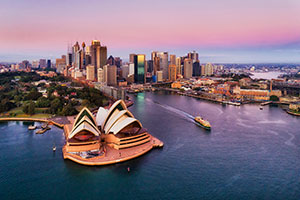
 The Signature Collection – Exclusive Amenities
The Signature Collection – Exclusive Amenities
